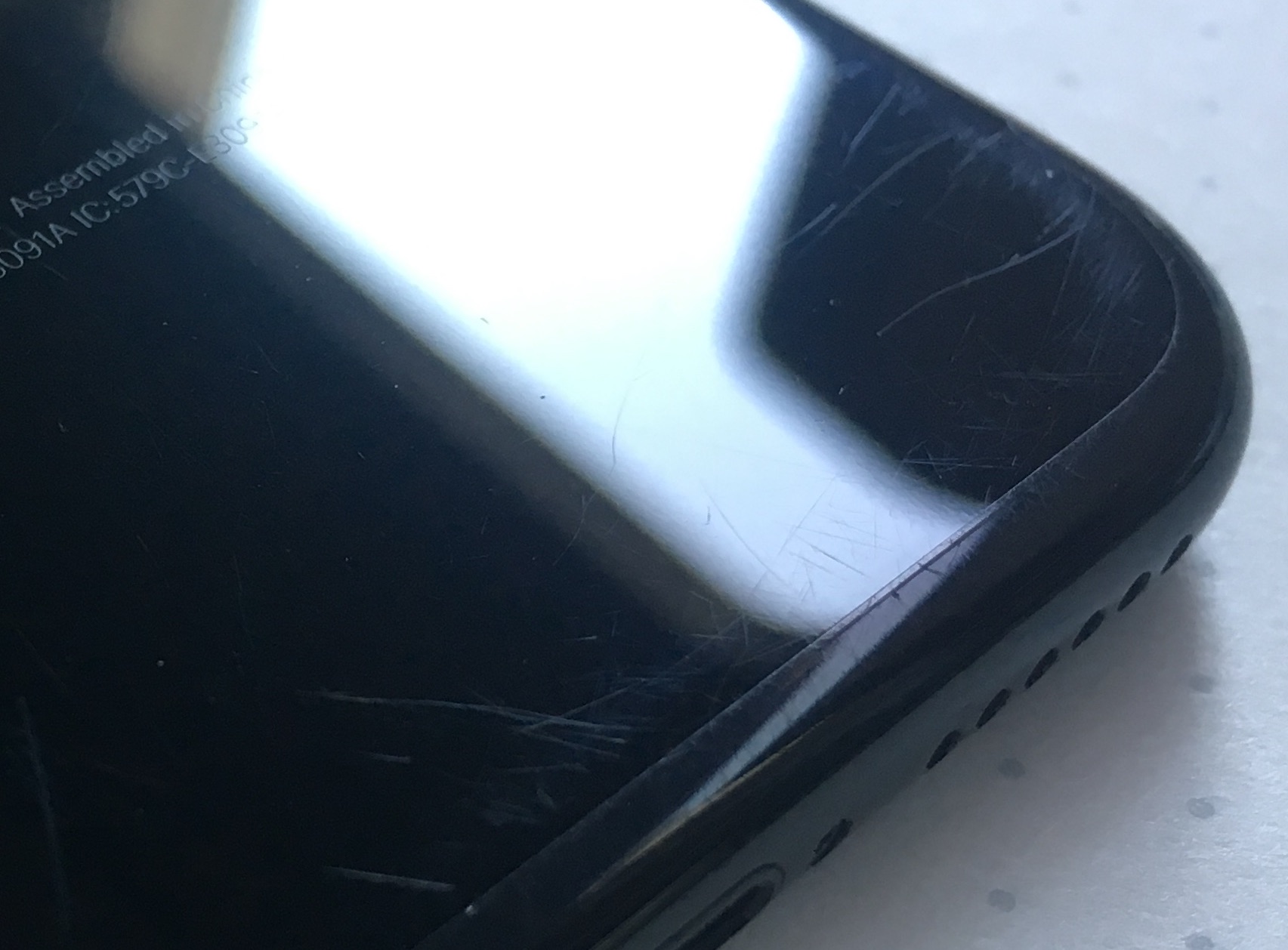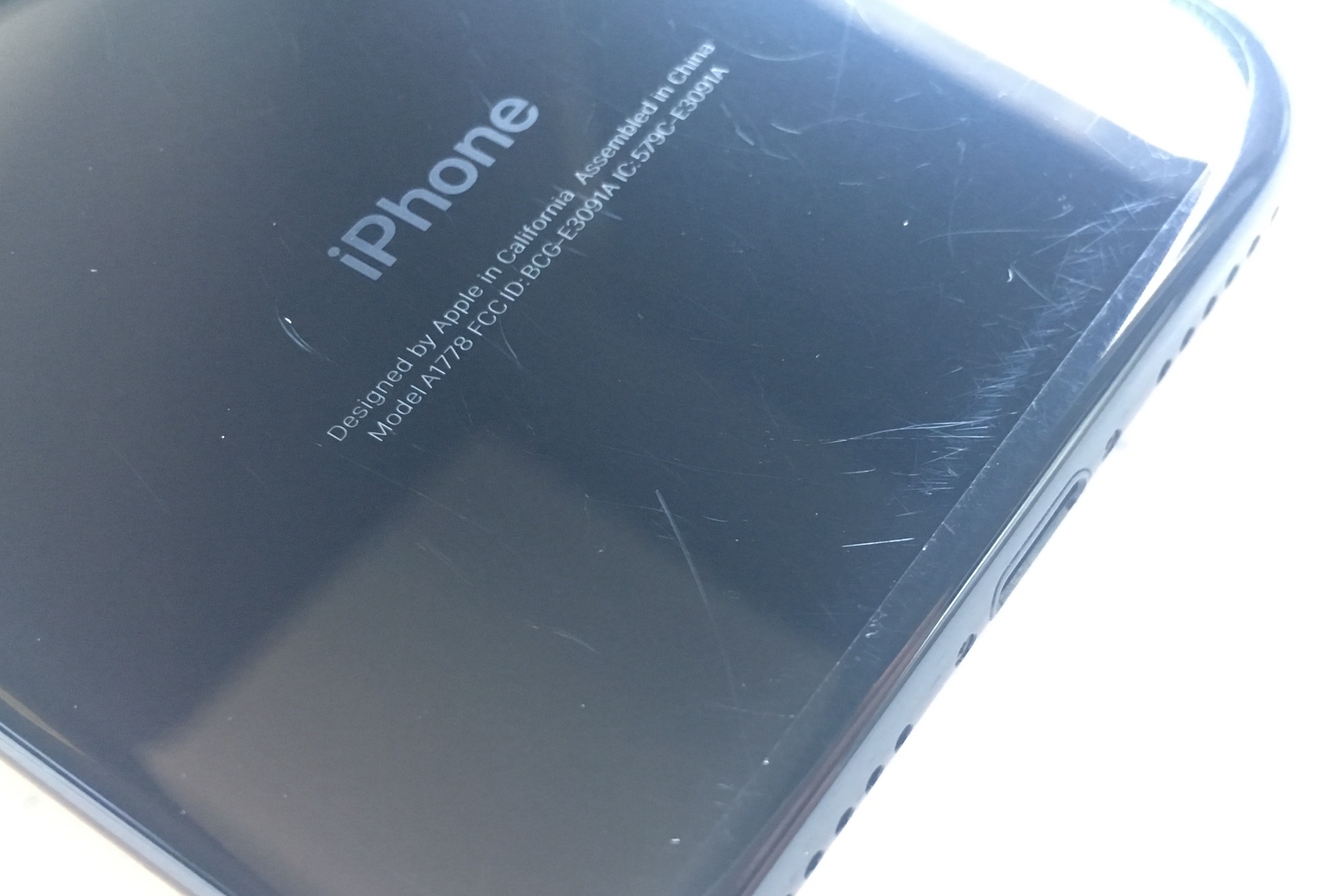Now that I’ve been using my jet black iPhone 7 for a little over a month, I figured it’d be depressing interesting to look at the state of that high-gloss finish and see how it’s fared over that short period of time.
In previous years, this was not even a concern, but the fragility of the new jet black finish has been under scrutiny since day one, especially as Apple itself noted that jet black devices would be prone to micro-abrasions.
Disclaimer: I’m careful with my stuff
We all use our devices in different ways. I like to think of myself as someone who takes great care of his stuff. While I don’t use a case on any of my iPhones, I am extremely careful with them, making sure they are always either in my pocket or in a safe and stable location, out of reach of my two young children.
I don’t baby these iPhones either. While I try to be gentle with my devices, I don’t let that get in the way of my use of them. All this to say that I am careful, but not crazy careful.
This applies to my iPhone 7 as well. When it is in my pocket, I always make sure not to have anything else in that pocket, especially keys. When it’s somewhere else (desk, table, night stand, etc), I always make sure to put it down gently.
The difference between micro-abrasions and scratches
The way I see it, a micro-abrasion is a mark that you can see but one you cannot feel. On the other hand, a scratch is a mark that you can see and feel if running a fingernail on top of it. I believe this distinction to be important, and I also believe that most people would agree with it.
So, does it show micro-abrasions?
As expected, my jet black iPhone 7 shows quite a few micro-abrasions on the back of the device. I am not sure why, but most of the micro-abrasions show along the bottom edge of the phone. You may think this might be due to the way I put the phone in my pocket, but i’s not, and there is one simple reason for that: for the past several years, I’ve always put my iPhones top first in my left pocket. The reason I do that is because when I pull it out of the pocket, it’s ready to use and I don’t have to switch orientation. It’s a habit.
This said, if the pocket was one of the culprits, micro-abrasions should show at the top of the device, but strangely, that part of my iPhone is the one showing the least amount of micro-abrasions.
So could it be the way I put my iPhone on tables? Well, for the past few days I’ve been trying to be conscious of the way I lay my iPhone when putting it on a table, and every single time, I put the right edge down first, then the rest of the device. Again, I would expect the right edge to show more micro-abrasions than the left one, but it doesn’t. It shows just as much as the left edge.
The sad reality is that there are a couple scratches as well. Now remember that I define a scratch as something I can feel with my fingernail. Unlike the micro-abrasions, you can tell that these scratches are digging deeper into the finish of the surface. You can also feel and hear it when running your fingernail on top of them.
All this is very difficult to capture on a photograph. Despite being way overexposed, the image above was the best photo I could take to show some of these micro-abrasions.
The bright side of the story
The bright side is, there are so much greasy fingerprints showing on the back of my jet black iPhone 7 that you can barely see the micro-abrasions or scratches. I’m half joking here, but it is true that jet black is a fingerprint magnet. That doesn’t bother me too much because after spending 10 minutes in my pocket walking around, the device usually comes out much cleaner. Besides, I always put my iPhone face up when laying it on a table, so I rarely see the back of the device anyway.
Now if you saw me talking on the phone in the street, you would never be able to tell there is any scratch or micro-abrasion on my iPhone 7. They are there, but you really need to look for them up close and in the right light.
In conclusion…
Micro-abrasions are real, and no matter how careful you’re going to be with your jet black iPhone, you will surely find some on the back of the device. Maybe you’ll find scratches as well, like I do.
If you’re concerned about that, Apple recommends using a case. Personally, I think a case could make things even worse because if you don’t often remove the case to clean up the inside of it, those micro particles of dirt and dust that are inevitably going to get stuck between the case and the back of your iPhone are going to make more damage to this fragile finish than you would if you were just careful. Now if you do want to put a case on it, we have a great selection of heavy duty, ultra thin, and minimalist cases for you to check out.
If you’re thinking that a skin could bring you more protection against scratches, you might want to check out this video showing how a skin applied and then removed from the back of a jet black iPhone has partially removed some of the “iPhone” and regulatory prints from the device.
I personally think it’s cool, but it goes to show once again that jet black is a very fragile finish. It’s definitely not something Apple had intended.
At the end of the day, those micro-abrasions aren’t very visible to the untrained eye, but they would certainly hurt the resale value of your device. If you are concerned about this, my best recommendation would be to simply stay away from this finish. Go with black, which is equally (if not more) beautiful and definitely is a stronger finish that will better stand the test of time.

